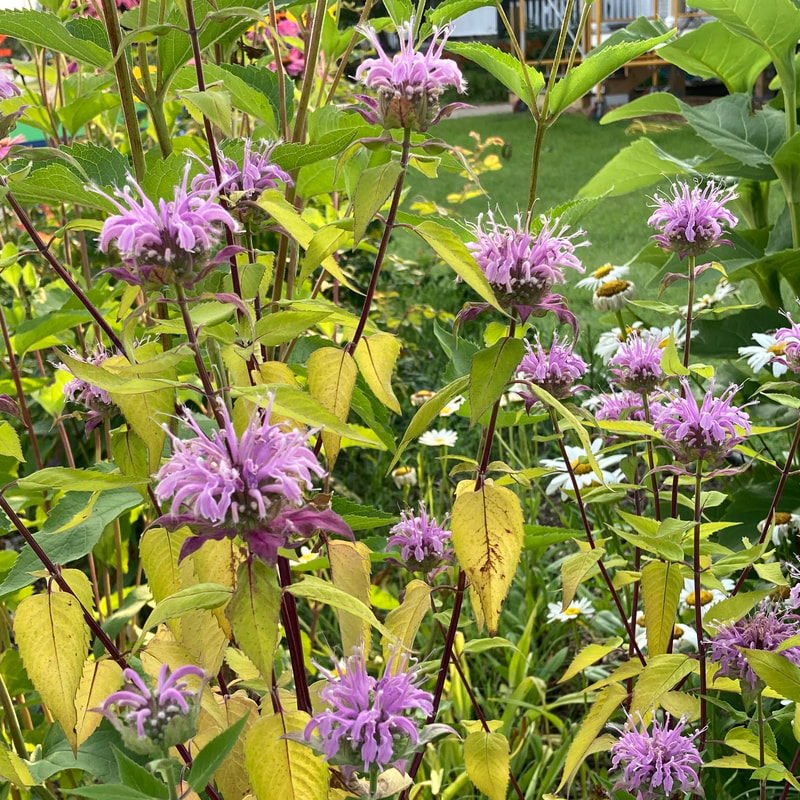|
Photo and article by Donna Iverson Recently I checked out a newly-published book from the public library entitled “The Ecological Gardener,” written by British author Matt Rees-Warren. In it, he places “ecological concerns above all else,” when it comes to gardens while not sacrificing the importance of aesthetics. His vision includes growing native plants and choosing plants that fit the ecology of the place, whether it is beach sand, wetlands, or meadow land. Rees-Warren prioritizes trees, bushes and plants that benefit local wildlife, including pollinators like native bees and butterflies. As I am already thinking about next year's planting, I have decided to take this ecological imperative to heart when planning next years garden. So when I spotted bee balm (Monarda fistulosa) in my neighborhood, I checked out its ecological credentials. And it passed. It is both a native plant and suited to the sandy soil in my local community garden. Pollinators, especially native bees, find it irresistible. And it is drought tolerant and likes full sun. And it is easily grown from seeds which are readily available from garden centers and seed catalogs. Bee balm would fit well into any native garden, pollinator garden, herb garden, cottage garden, or butterfly garden. It attracts hummingbirds, bees, butterflies and other pollinators. And it is avoided by deer and rabbits. It is both fragrant, noninvasive and displays attractive lavender blue blossoms from late summer into fall. Herbalists use it to make tea from the leaves and its flowers are also edible. The tea soothes the symptoms of colds and seasonal flu. It can also be found in the wild where it has naturalized. Foragers find it in waste places in the company of Black-eyed Susans, Queen Anne’s Lace and goldenrod. Historically, Native Americans also used it to make Oswego tea. And colonists switched to Bee balm herbal tea after dumping traditional black and green tea into the sea during the 1773 Boston Tea Party. Other uses include herbal sleep pillows, linen closet sachets, and potpourris. It can be used fresh or dried. If you are already growing bee balm, cut it down to two inches above the soil come frost.
2 Comments
Kathy
9/12/2021 10:12:16 pm
With loads of dirt under my nails, I
Reply
Marsha Reeves
9/12/2021 10:19:10 pm
There's lots of bee balm AKA Monarda fistulosa growing in our clearing. I'm happy to share seeds from locally adapted plants. I leave the stalks up until spring, as some insects make their winter homes there. So glad you featured this favorite wild medicine!
Reply
Your comment will be posted after it is approved.
Leave a Reply. |
Archives
April 2024
Categories |

 RSS Feed
RSS Feed